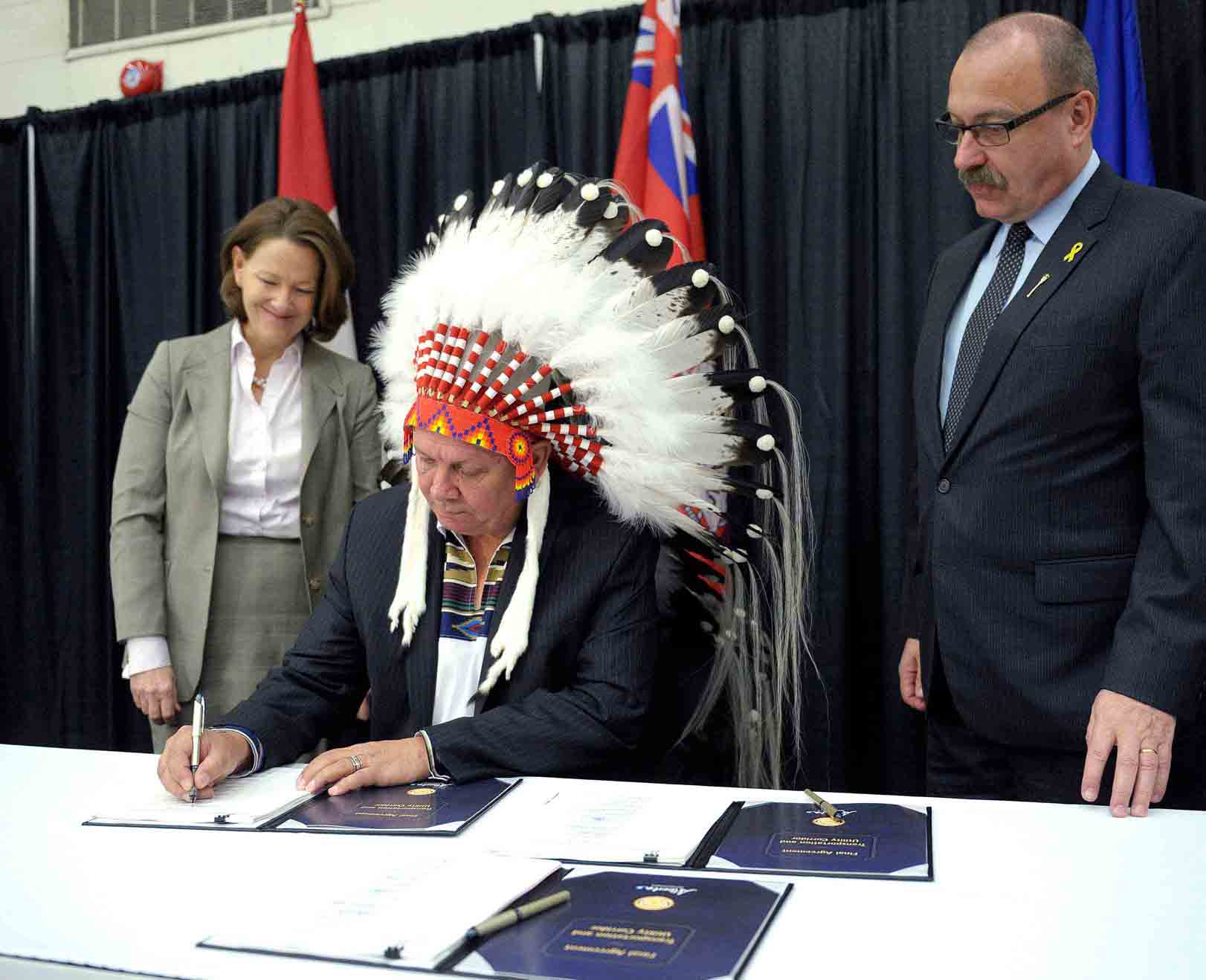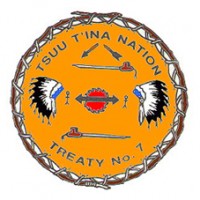On Thursday, October 25, 2013 the membership of the Tsuu T’ina First Nation went to the ballot boxes and voted on a proposal to approve construction of the southwest leg of the Stony Trail ring road. On November 27, 2013 the agreement was endorsed by the band andgovernment officials. The band voted heavily in favour of the project and in doing so brought an end to nearly 50 years of growing traffic congestion and political standstill. The 2013 vote to approve the building of the multi-million dollar mega-project was endorsed and supported by Tsuu T’ina Nation Chief Roy Whitney, who played an instrumental role in seeing the provincial initiative though to a conclusion. Whitney is in his second go-around as Tsuu T’ina Nation Chief, a job he also carried out from 1985 through 2001.
The Chief credited his community, saying that the “record turnout saw the majority of voters” cast a ballot “for a better future for their children, grandchildren and great grandchildren,” and noted that “this (decision) sets a new course, a new path, a new
opportunity. As our people continue to evolve a new vision will evolve with them; this is an historic moment. It presents our people, our young people with an opportunity to evolve, to grow their own capacities and to become entrepreneurs that can assist in the development of their lands around the road as it enters our community.”
The last referendum, which was held in June of 2009, was rejected by the band, who turned down $240 million and about 2000 hectares of land. When that vote was rendered, then-Alberta Premier Ed Stelmach declared: “The agreement with the Tsuu T’ina is dead.” But the ground work laid out by the band’s former leader, Chief Sanford Big Plume, was only resting while the community awaited a proposal from the province that they could live with. The revival of the initiative and the positive vote by the band’s membership will now enable the province to move ahead with its agenda to have the project completed within the next seven years.
All of the terms of the agreement haven’t yet been made public but according to band sources and mainstream media reports the Tsuu T’ina will receive $275 million in cash and 2000 hectares of new reserve land in exchange for about 400 hectares to build the road. The province has also offered in the neighbourhood of an extra $65 million to help pay fo
r businesses and residents who will have to move in order for the road to be completed.
In conversation with the Calgary Herald, Chief Whitney, who played an integral role in pursuing the historic agreement said the agreement came to fruition as a result of the band being able to “develop a team that provided consistency, (and found) innovative ways of being inclusive of our committee members. That was one of the first steps. The community needed to see this project as their project so right from Day One we began a process of defining it as inclusive of all nation members, whether they were eligible to vote or not, in terms of providing the appropriate information and keeping them involved in part with some of the recommendations we brought forward to council.”
Whitney told reporter Stuart Gradon that all parties will benefit from the agreement.
“I think with the appropriate planning and the right mechanism that will be evolving over the next three to six months in terms of the planning process, my hope is that it creates economic opportunity for the Nation in terms of being able to participate in the construction of the major freeway, from providing goods and services as well. Ownership is a big thing and people need to be engaged and they need to feel that whatever happens it’s theirs and it’s because of them that it’s become successful. To me, it’s futuristic. We need to establish a livelihood and a lifestyle that will complement their needs.”
The proximity of the Tsuu T’ina territory to the City of Calgary has contributed to a long-standing disagreement over the province’s plans to construct the western leg of the Stoney Trail (Highway 201) a ring road. Nearly 50 years has passed since the City of Calgary’s first attempt to seal a deal that would enable the southern Alberta city to extend the southwest leg of the ever-growing community’s important ring road project. The southwest leg of the mega-million dollar project couldn’t be completed because the Tsuu T’ina First Nation, which was created with the signing of Treaty 7 in 1877, and the provincial government couldn’t come to terms on a mutually beneficial agreement. The City of Calgary is an ever-growing community, as is the Tsuu T’ina Nation membership. In 1996 the band had 1509 residents; in 2011 that number had grown to 2,059 and as a member of Canada’s largest growing population, it continues to grow and develop.

When the Government of Alberta and the Tsuu T’ina Nation signed the agreement late last year, Premier Allison Redford said “this agreement really demonstrates our government’s commitment to building Alberta in a way that is good for all of us and that involves many voices. When we work hard and work together, we can continue to build the Alberta we all want and need for the future.”
Alberta Transportation Minister Ric McIver, who along with Chief Whitney and Premier Redford also signed the agreement, said that the Alberta government “will work in partnership with the Tsuu T’ina Nation and the federal government to proceed with the land transfer. This work will be guided by a committee with representatives from all parties and we will continue to work together in good faith.”
Over 900 band members voted on the referendum; more than 650 voted in favour of the project.
by John Copley



Be the first to comment on "Tsuu T’ina ring road will benefit all Calgarians"